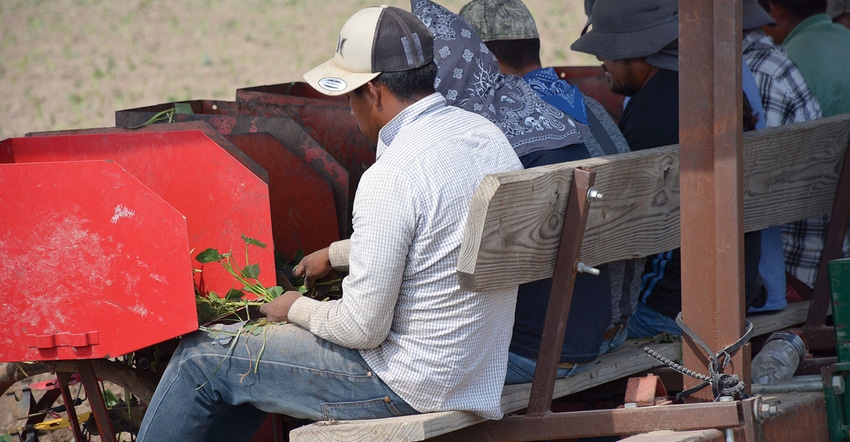
Finding workers willing to take on the arduous tasks demanded on farms, ranches and other ag-related enterprises stands as one of the most frustrating factors facing farmers, managers and overseers.
Farm work is hard. Chores often require heavy lifting, working long hours in harsh weather, and sometimes dodging ill-tempered animals.
Many farms now need workers capable of learning to operate sophisticated equipment — precision planters, spray rigs and harvesters.
Employees with many of these skillsets find higher paying jobs — with benefits — in other industries, leaving agriculture scrambling to fill key positions.
“It’s an issue across the Cotton Belt,” says David Wildy, Wildy Family Farms, Manila, Ark. Wildy, during a recent National Cotton Council Producer Information Exchange tour stop at his farm, says he never attends farm meetings that the topic doesn’t get mentioned.
“We have three steel mills in the county,” he says, “and we have to compete with them for labor.”
Can’t match industry wages
He says most farm operations can’t afford to match industry wages. “We are fortunate to have some good full-time employees,” he adds.
He also uses H-2A to fill out labor demands during busy times.
“We’ve used H-2A for several years,” Wildy says. “I have been pleasantly surprised.”
His crews have come from South Africa and he says they come to work. “Often, at the end of the day, they’ll ask if they can do anything else for us before they leave. They are always respectful.”
Marty Moore and his son Ryan, Hornersville, Mo., raise 3,500 acres of cotton, 400 acres of soybeans, 340 acres of peanuts and 200 acres of melons. They also have a packing house, which requires several dozen seasonal workers.
“Handling fruit carefully is a big issue with melons,” Marty says. But crews also have to keep pace and not slow down the conveyor.
“We used H-2A labor this year,” Marty said during a PIE tour stop. “That was the best crew ever.”
“Of the 48 guys we had, only five were new crew members,” Ryan adds. “The rest have been here at least the last three years. They come to work. H-2A works well for us. Domestic labor is not available.”
Regulations
Wildy says H-2A comes with numerous regulations. “It can be hard, and we have to jump through a lot of hoops. We pay travel here and back. We are required to pay a certain amount per hour, based on the area.”
He says farmers have to start early in the year to get the paperwork done and secure H-2A workers for the next season. “We’ve been pleased with it.”
The H-2A program is administered through the U.S. Citizenship and Immigration Services.
The H-2A website explains the program.
“The H-2A program allows U.S. employers or U.S. agents who meet specific regulatory requirements to bring foreign nationals to the United States to fill temporary agricultural jobs. A U.S. employer, a U.S. agent as described in the regulations, or an association of U.S. agricultural producers named as a joint employer must file Form I-129, Petition for Nonimmigrant Worker, on a prospective worker’s behalf.”
Process
The site also explains the qualification process.
To qualify for H-2A nonimmigrant classification, the petitioner must:
Offer a job that is of a temporary or seasonal nature.
Demonstrate that there are not enough U.S. workers who are able, willing, qualified, and available to do the temporary work.
Show that employing H-2A workers will not adversely affect the wages and working conditions of similarly employed U.S. workers.
Generally, submit a single valid temporary labor certification from the U.S. Department of Labor with the H-2A petition. (A limited exception to this requirement exists in certain “emergent circumstances.” See e.g., 8 CFR 214.2(h)(5)(x) for specific details. (https://bit.ly/2kmmLgs).
Numerous other stipulations regulate the program and include transportation, wages, and period of stay.
About the Author(s)
You May Also Like






